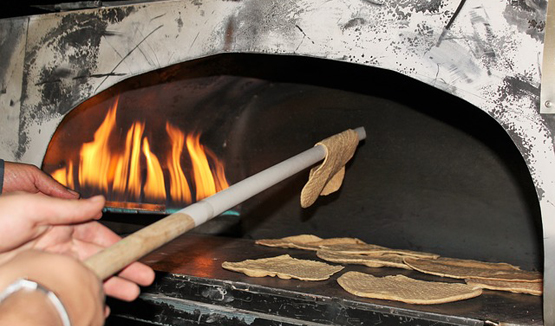
Nissan 5779, Issue no. 6
Toraland TV
Mitzvah in a Minute – Challah
Q&A
Lettuce from an open area for maror
Rabbi Ehud Ahituv
Question: Is it possible to buy lettuce that grew in an open area, wash it with quality cleaning agents, and eat it without checking the leaves?
Answer: Like with all leafy vegetables, soaking lettuce grown without halachic supervision is insufficient. It is imperative to also perform a visual check to see that there are no insects visible to a healthy, human eye in a well-lit area.
The reason is that every vegetable or fruit that is generally infested must be checked visually by the naked eye to ensure there are no insects, as the Shulchan Aruch (YD §84:8) rules:
"All types of fruits that are generally infested when they are attached to the tree, one may not eat until he checks … for it may have a worm inside it."
Lettuce grown in an open field is one of the crops we are obligated to check before eating to ensure there are no insects, and we need to remove any insects we find from its leaves. At times it is also necessary to throw away leaves with signs of tunneling left by leaf miners, since they might still be present within the leaf. The poskim rule that when there is an obligation to examine for insects, the examination has to be an inspection of 100% of the product to the point that we can safely say that no insects were found upon visual inspection.
Experience shows us that even after rinsing in water and the best cleaning products, lettuce grown in open fields often remain infested with many types of insects. For this reason, it is clear that even after rinsing or soaking, we still need to inspect the leaves.
Note that even when it is difficult to see the insects, since they are camouflaged with the leaf or because of poor lighting conditions, it is still necessary to inspect for them. This examination should be performed by G-d fearing individuals with good vision. Even if it is very cumbersome to examine the lettuce, there are no loopholes. For these reasons, throughout the generations some poskim preferred types of maror that do not involve intense examination, even if they were less preferable to lettuce from a halachic perspective (Mishna Berura §473:42).
In conclusion, it is preferable to buy lettuce for maror from reliable companies that market insect-free products that are also free of pesticide traces, and not rely on rinsing lettuce grown in open field.
For the full answer, click here.
News
Birkat Ha'ilanot
Can we say birkat ha'ilanot over trees grafted in a prohibited fashion? What about orlah trees? An article all about this special mitzvah that we do once a year in the Spring.
See the article here, and our short video here.
Bi'ur Ma'aserot
This coming erev Pesach is the time we observe the mitzvah of bi'ur ma'aserot. We also customarily recite the text of viduy ma'aserot, in commemoration of the Beit HaMikdash. Whoever has coins used to transfer the sanctity of ma'aser sheni and neta revay, needs to destroy them. For the laws of bi'ur ma'aserot and the full text of viduy ma'aserot, click here.
Pesach Q&A
Hydroponically grown maror, selling products with wheat ingredients, lecithin and rapeseed on Pesach, conditioning wheat kernels today, and more. See here.

The prohibition of chadash
On 17 Nissan, the second day of sefirat ha'omer, is the first day that it is permitted to eat the new produce grown from the five grains. To read about this prohibition and why in Israel most kashrut observers haven't heard about it, see the article here.
Insect-free cultivation developments
Torah VeHa'aretz Institute spearheaded the industry of insect-free vegetable cultivation. This method was first developed more than 30 years ago, in Gush Katif, to facilitate checking lettuce used for maror on Seder night. Today we give tours throughout the Negev to hothouses and kashrut inspection laboratories and explain how this method is applied today.
To book a halacha-and-agriculture tour, contact:
Rabbi Bloom, +972-52-8903729, h.moshe@toraland.org.il
